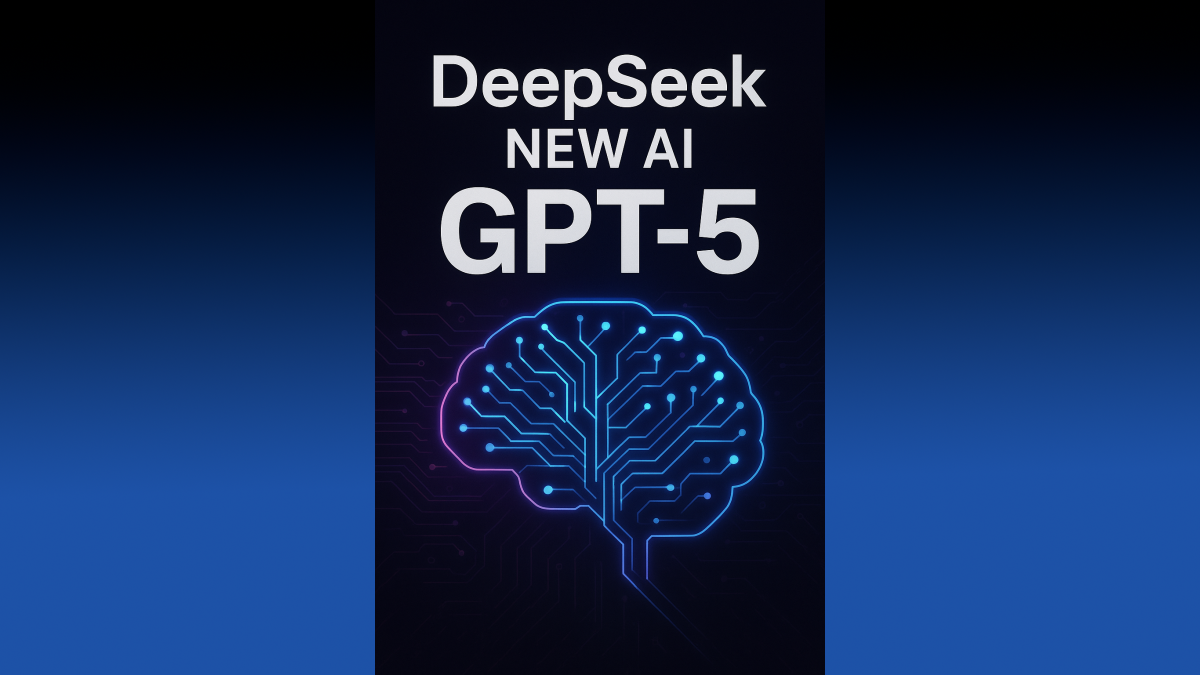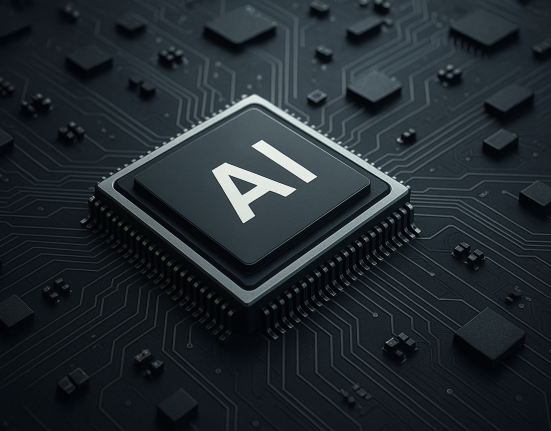In the crowded and highly competitive world of artificial intelligence, few stories have jolted the industry like the arrival of DeepSeek, a Chinese startup whose open-source models have not only rivaled but in some cases outshined offerings from American tech giants. In early 2025, the release of DeepSeek-R1, powered by the company’s DeepSeek-V3 model, sent shockwaves through the global AI landscape, igniting excitement, skepticism, and widespread debate over the future of AI innovation.
At its core, DeepSeek’s disruption comes down to a matter of cost versus performance. While companies like OpenAI and Google have poured hundreds of millions of dollars into training their flagship systems, DeepSeek stunned observers by claiming to train a state-of-the-art model for just $5.6 million. For comparison, OpenAI’s GPT-4 reportedly cost about $78 million to train, while Google’s Gemini Ultra came with an even steeper $191 million price tag. DeepSeek’s efficiency comes from a mix of architectural innovations, clever optimization, and the use of less expensive hardware such as H800 GPUs combined with advanced training techniques like FP8 mixed precision.
The results were immediate and dramatic. Within days of its release, DeepSeek’s chatbot app shot to the top of the U.S. Apple App Store, surpassing even OpenAI’s ChatGPT as the most downloaded free app. The viral rise made headlines not only in the tech press but also in mainstream outlets, as users marveled at its capabilities and accessibility. At the same time, global stock markets reacted sharply: Nvidia, the world’s most valuable chipmaker, saw its valuation plummet by nearly $589 billion in a single day, one of the steepest drops in corporate history, as investors feared that DeepSeek’s ability to do more with less could disrupt demand for expensive AI hardware.
Industry leaders took notice. Microsoft CEO Satya Nadella praised the model as genuine innovation, while Sam Altman of OpenAI acknowledged it as a serious competitor. Even Tim Cook of Apple lauded its emphasis on efficiency. Yet enthusiasm was tempered by caution. Cybersecurity experts quickly identified vulnerabilities to prompt injection attacks, raising concerns about its safe use. Regulators in Europe and the U.S. questioned whether Chinese companies might be compelled to share user data with government authorities, with Italy going as far as banning the chatbot unless privacy protections improved. Several countries, including the U.S., South Korea, and Taiwan, have warned against or restricted its adoption in government offices.
Despite these challenges, DeepSeek has not slowed down. Just months after R1, the company rolled out DeepSeek-V3.1, boasting faster inference speeds, hybrid architecture, and expanded agent-like capabilities. Looking ahead, reports suggest the firm is working on an AI agent capable of multi-step autonomous tasks, aiming for release by the end of 2025.
The broader implications of DeepSeek’s rise extend far beyond one company’s success. It has forced the industry to reconsider whether bigger budgets always lead to better AI. It has also spotlighted the geopolitical dimension of AI, as China positions itself as a serious rival to Silicon Valley’s dominance. Whether DeepSeek can maintain momentum amid regulatory pressure and security doubts remains to be seen. What is clear is that this shocking debut has broken the internet—and may have permanently changed the way the world thinks about artificial intelligence.
DeepSeek’s Rise
1. What is DeepSeek—and Why Is It Making Headlines?
- DeepSeek R1, a powerful open-source AI model by the Chinese startup DeepSeek, was launched in late January 2025. It quickly challenged industry giants like OpenAI and Google by delivering comparable performance at a fraction of the cost WikipediaHarvard Business ReviewWikipediaAl Jazeera.
- The company claims training R1 cost just $5.6 million, compared to $78 million for ChatGPT-4 and $191 million for Google’s Gemini Ultra Wikipedia.
2. The Shockwaves: Downloads, Markets & Reactions
- DeepSeek’s app rocketed to the top of the U.S. Apple App Store as the most downloaded free app—outranking ChatGPT NBC New YorkWorld Economic ForumWikipedia.
- Its emergence triggered a massive stock market reaction. Nvidia suffered its largest single-day market capitalization loss—up to 17–18%, wiping out over $589 billion in value Wonderful EngineeringWikipediaWikipedia.
- Tech leaders reacted quickly:
- Satya Nadella (Microsoft) praised it as “real innovation.”
- Sam Altman (OpenAI) called it “clearly a great model.”
- Tim Cook (Apple) applauded its efficiency-driven innovation.
- Alex Karp (Palantir) highlighted the importance of “an all-country effort” NBC New York.
3. How Did DeepSeek Do It?
- Powered by DeepSeek-V3, a highly optimized model trained using low-cost H800 GPUs and advanced top-tier techniques like FP8 mixed-precision training WikipediaHarvard Business Review.
- Its open-source nature and architectural efficiency drastically lowered compute requirements—20 to 50 times cheaper than some competitors, depending on the task Wikipedia.
4. Broader Industry Impacts and Controversies
- DeepSeek’s arrival led many to reevaluate AI investment models, with efficiency now under the spotlight DatasumiHarvard Business Review.
- Some critics are questioning whether DeepSeek’s claims live up to the hype Al JazeeraWorld Economic Forum.
- Security concerns quickly emerged:
- DeepSeek-R1 showed vulnerabilities to prompt injection attacks, ranking lower among tested models in resilience to such exploits Wikipedia.
- Privacy and regulatory scrutiny followed:
- Italy’s data authority banned the chatbot unless privacy policies improved.
- Multiple governments—including the U.S. federal agencies, South Korea, the Netherlands, Taiwan, and Texas state—warned against or restricted its use due to data security concerns, potential access by Chinese authorities, and broader national security risks Wikipedia.
5. What Comes Next?
- DeepSeek-V3.1, the next iteration, was released just two weeks ago. It introduces:
- A hybrid inference architecture,
- Faster processing,
- Enhanced agent capabilities,
- A revamped API pricing plan from September 2025 Reuters.
- The company is reportedly working on a new AI agent capable of performing multi-step tasks with minimal user input, slated to launch by the end of 2025 YourStory.comOmni Ekonomi.
- Meanwhile, analysts warn that China’s approach—balancing innovation with centralized control—could stifle innovation amid concerns about overcapacity and inefficient investment Reuters+1The Times of India.
- Security professionals urge caution: Many companies and countries are already banning or restricting its use due to data confidentiality risks. Experts compare using DeepSeek in organizations to “handing over confidential information” IT Pro.
Summary: Why DeepSeek Broke the Internet
| Factor | Details |
|---|---|
| Performance vs. Cost | Near state-of-the-art AI at a tiny fraction of cost |
| Viral Rise | Quick top app ranking, massive social buzz |
| Market Impact | Historic stock losses for chipmakers like Nvidia |
| Tech Buzz | Praise from major CEOs, disruption of norms |
| Concerns | Security gaps, regulatory scrutiny, geopolitical unease |
Final Thoughts
DeepSeek has proven itself a disruptive force: combining affordability, open access, and performance leaps that challenge existing AI economics and models. Yet, with that disruption comes valid concerns around security, privacy, and governance—especially as geopolitical tensions rise.
A comprehensive look at how DeepSeek became an overnight sensation with viral momentum and ethical debates.
Inside DeepSeek’s AI breakthrough — explores how it’s reshaping the global AI race.
DeepSeek | From Zero to Viral | How It Took Over the Internet … — chronicles its rapid rise and the ethical questions it raises.
Why DeepSeek is Actually a Massive Deal in AI — analyzes why its cost-efficiency and open-source nature are causing industry-wide disruption.
A dynamic breakdown of why DeepSeek has captured global attention and how it’s reshaping the AI landscape. YouTube








Leave feedback about this
You must be logged in to post a comment.